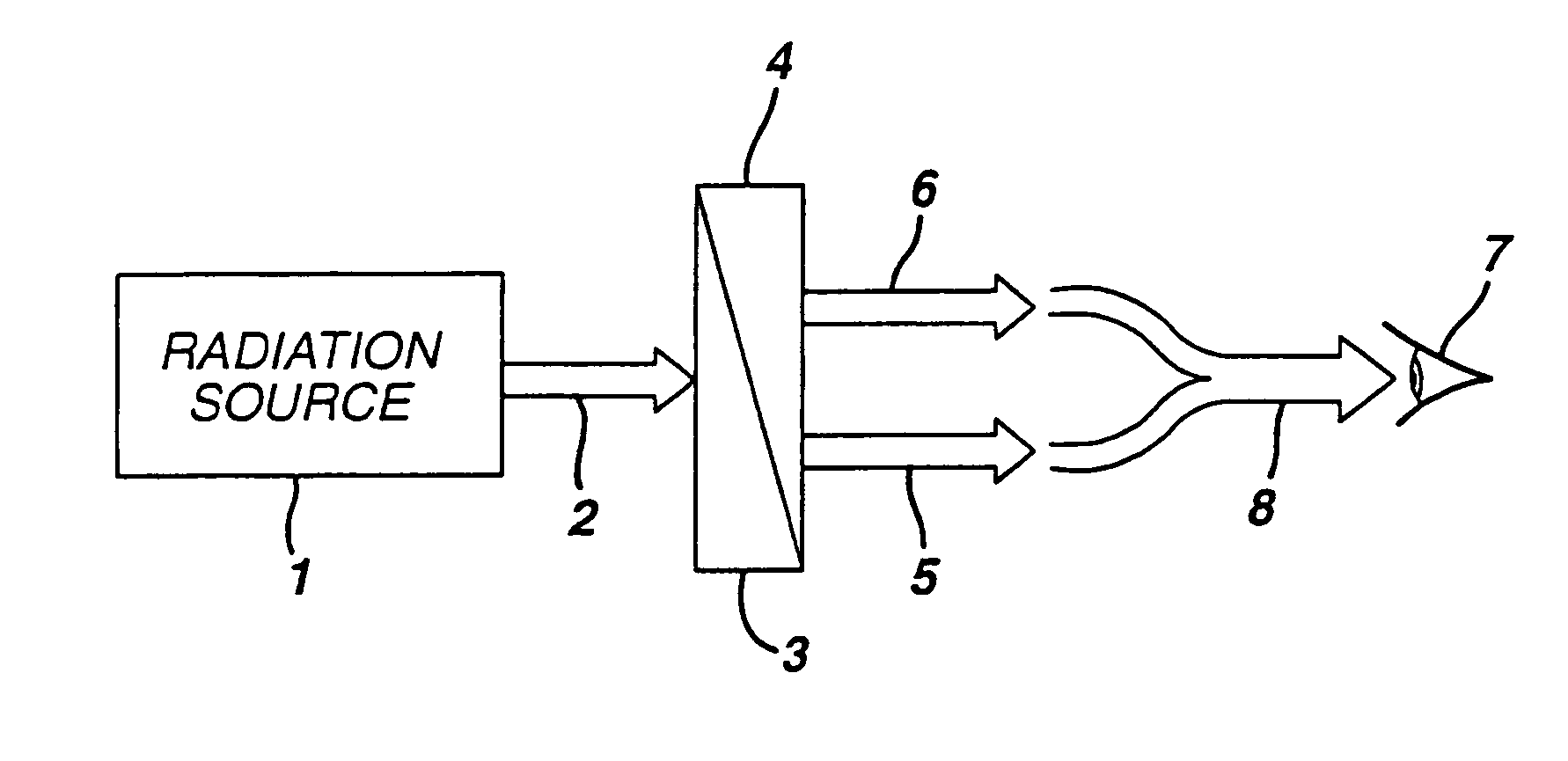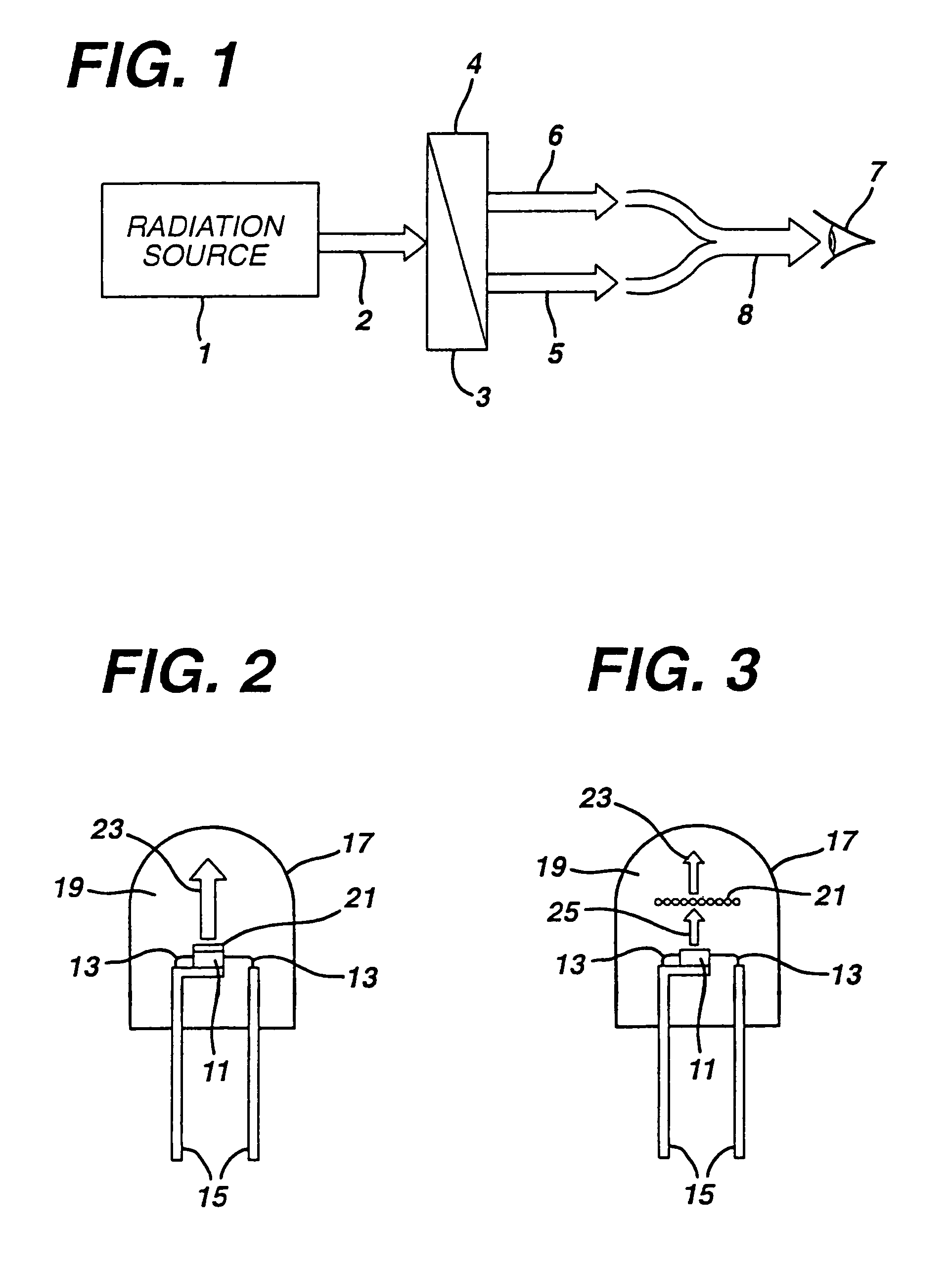White light emitting phosphor blend for LED devices
a technology of phosphor blend and led devices, which is applied in the direction of energy-saving lighting, sustainable buildings, lighting and heating apparatus, etc., can solve the problems of led color output deviating from the desired parameters, led power applied to the led frequently deviating from the desired value, and color output of the system to appear non-whi
- Summary
- Abstract
- Description
- Claims
- Application Information
AI Technical Summary
Benefits of technology
Problems solved by technology
Method used
Image
Examples
example 1
[0079]A first (Sr0.8Eu0.1Mn0.1)2P2O7 phosphor was prepared by blending SrHPO4, MnCO3, Eu2O3 and (NH4)HPO4 powders to form a starting powder mixture. The (NH4)HPO4 was added in an amount comprising 2% in excess of the stoichiometric ratio per mole of the first phosphor produced. The starting powder mixture was then heated in air at about 600° C. for 1 hour. The resulting powder was then re-blended and subsequently fired in a reducing atmosphere comprising nitrogen and 0.5% hydrogen at about 1000° C. for eight hours to form a calcined phosphor body or cake. The solid phosphor cake was converted to a first phosphor powder by wet milling and subsequent drying.
[0080]The first phosphor powder was blended with a commercially obtained SAE phosphor powder in a ratio of 89:11 by weight to obtain a phosphor powder blend or mixture. The phosphor powder blend was irradiated with a light source having a peak emission wavelength of 405 nm. The phosphor emission appeared white and its CIE color coo...
example 2
[0081]The experiment of Example 1 was repeated, except that a radiation source had a peak emission wavelength of 380 nm and the phosphor powder blend contained a 77:23 ratio by weight of strontium pyrophosphate to SAE. The phosphor emission appeared white and its CIE color coordinates were determined to be x=0.39 and y=0.42 from photometric calculations. The color coordinates are indicative of a color output which appears white to a human observer.
PUM
| Property | Measurement | Unit |
|---|---|---|
| peak emission wavelength | aaaaa | aaaaa |
| peak emission wavelength | aaaaa | aaaaa |
| wavelength | aaaaa | aaaaa |
Abstract
Description
Claims
Application Information
 Login to View More
Login to View More - R&D
- Intellectual Property
- Life Sciences
- Materials
- Tech Scout
- Unparalleled Data Quality
- Higher Quality Content
- 60% Fewer Hallucinations
Browse by: Latest US Patents, China's latest patents, Technical Efficacy Thesaurus, Application Domain, Technology Topic, Popular Technical Reports.
© 2025 PatSnap. All rights reserved.Legal|Privacy policy|Modern Slavery Act Transparency Statement|Sitemap|About US| Contact US: help@patsnap.com



